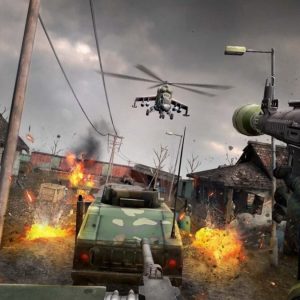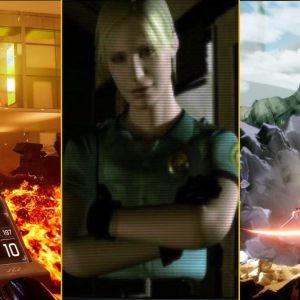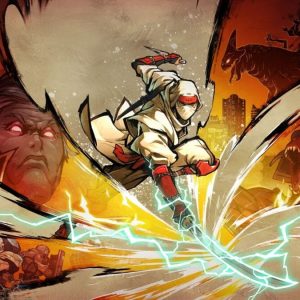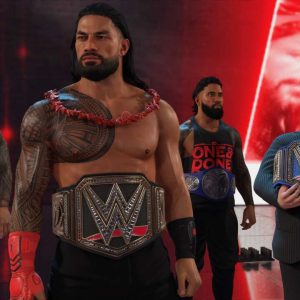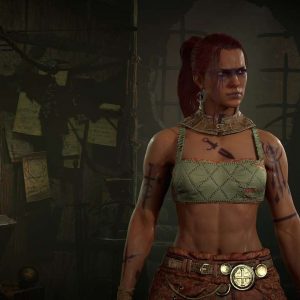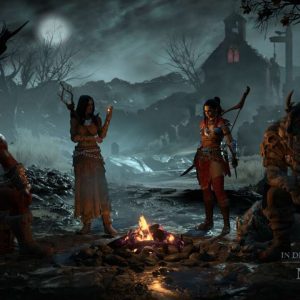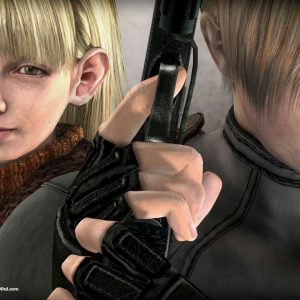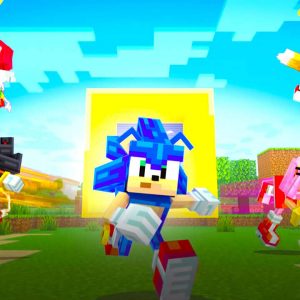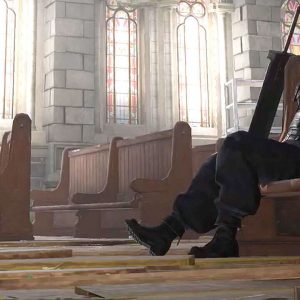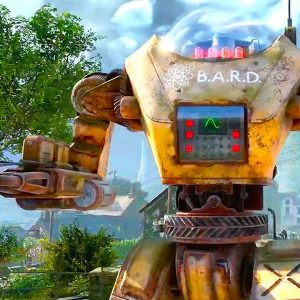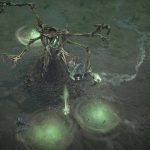I remember vividly when I first caught wind of The Outer Worlds back in 2018 – my managing editor at the time talked about his preview of what developer Obsidian was working on; an original first-person RPG with the makings of a Fallout game. As someone who still won’t shut up about Fallout: New Vegas to this day, that was music to my ears. It turned out to be one of my favorite games of 2019, but instead of expecting it to be the next coming of Fallout, I saw it more as a new foundation for Obsidian to work within.
There were certain limitations to what the first Outer Worlds could be in terms of size and scope, and that much was clear in the several conversations I’ve had with the development team when reflecting on it. But after seeing the sequel in action for the first time and interviewing key folks at Obsidian, The Outer Worlds 2 seems like that original vision fully realized. For all the details I’ve been able to dig up about the revamped gameplay systems and worldbuilding, the overarching idea was that The Outer Worlds 2 needed to be a deeper RPG where player choice has more of an impact in nearly all aspects of the experience. And from everything I’ve gathered from our month’s-worth of exclusive coverage, this sequel looks like it’s stepping in the right direction.
What I’ve seen thus far is based on an early build of the game, all of which has been through hands-off demos, and all the footage you’ve seen was provided by Obsidian. So while I haven’t played it yet, The Outer Worlds 2 is so far reminding me of some of the best parts of the studio’s long list of RPGs, where unconventional playstyles are viable and unpredictable choices and outcomes are intrinsic to the roleplaying aspect, asking you to roll with the punches regardless of whether or not it’s deemed “optimal,” and this manifests in several ways.
Attributes, which were stats that you invested in as you leveled up, have been set aside for a heavier focus on Skills – a total of 12 (including staples like Engineering, Explosives, Guns, Hacking, Leadership, and more) now dictate how your character functions. While this may seem like further streamlining, the goal is to make sure the points you put into various Skills have a more noticeable impact throughout the process of leveling up, as opposed to the minute effects you’d feel in the old Attributes system. Of course, I can’t speak to how this comes to fruition in a full playthrough, but there are other systems in place that feed into the idea that these mechanical decisions can affect your character in bigger ways.
That leads to Perks, of which there will be about 90 to choose from. There are specific Skill levels needed to gain access to certain Perks, but these are said to offer significant changes to what you can do in combat, conversations, exploration, and more. One example is a Perk that lets you aim, fire, and reload while sprinting and sliding for those who want to approach enemies with the mentality of a traditional shooter. Or the Serial Killer and Psychopath Perks that grant bonuses for those who try a much more violent playthrough. Or the Space Ranger Perk that lets you convert points in your Speech Skill into damage bonuses in battle. Dialogue branches may vary based on the Skills and Perks you have (more so than the original), or your character may pick up on things in the environment they wouldn’t be able to otherwise, so the results of your build aren’t just isolated in combat scenarios. Those are just a few examples of how these systems feed into specific playstyles with the intention of rewarding you for the way in which you’re specialized.
Then there are Traits that stack additional permanent effects that you wouldn’t necessarily get through Perks. The catch is that if you want to take more Positive Traits, you have to also select Negative Traits, and that’s where things can get interesting. I’m actually curious about how I’d play with something like “Dumb” where I’d have to lock myself out from ever putting points into five of the 12 Skills, or “Sickly” where I’d take lower health and toxic resistance. It seems like a trade-off that could be worth it, depending on how I want to build out my character.
But if you want to lean more into unconventional mechanics, accounting for things you usually wouldn’t in other RPGs – enter the new Flaws system. Like in the original, the game is watching your behavior and then offering permanent bonuses at the cost of a permanent detractor depending on how you play. However, The Outer Worlds 2 goes deeper on this idea – you’re not just offered a Perk point if you take a Flaw. Flaws now have bespoke status effects and conditions that can have major ramifications for how you’ll play the game, should you take a Flaw. I only got to see two of them, but they speak to the philosophy behind them. Sungazer offers regenerative health outdoors during the day at the cost of extreme visual lens flare and reduced accuracy, and that’s activated by staring into the sun multiple times. Or if you quickly skip through dialogue choices frequently, Foot-in-Mouth offers a permanent XP bonus while forcing you to make all future dialogue choices in a 15-second window – and if that timer runs out, the game will pick for you, which can lead to some unintended consequences. There’s another Flaw that’ll force you to accept all future Flaws no matter what, and Obsidian hinted at one that will account for those who save scum, but that remains to be seen – it’s bizarre ideas like these that can shake up playthroughs. Obsidian said there are around 30 Flaws in total, and my hope is that the incentives will be worth the trade-off, and that they’re built in a way that it won’t be easy to circumvent their effects, which could diminish their impact.
All that said, it’s clear that Obsidian put a lot of thought into how to rebuild its RPG mechanics with the intention of making something that is more reactive and impactful, or at least purposeful along the progression path. And with no respec beyond the intro mission, you’ll have to build out your character with a little more care. Hands-off demos can only tell me so much, so I’m expecting everything else around The Outer Worlds 2 to bring out the best in those systems and push me to engage with them beyond the surface level.
That sounds all well and good, and the brief gameplay sequences I saw were also promising. While the first game had approachability at the forefront, The Outer Worlds 2 looks like it’s offering more variability with a web of systems that come together for something a bit more sophisticated. For example, we now have actual stealth mechanics with a better detection system, proper stealth kills, and scenarios in which this approach would make sense – and features such as damage bar read-outs tell you whether or not a stealth attack will be worth it. The N-Ray Scanner is one of the new gadgets you’ll use, and this lets you see through walls and detect cloaked enemies or key objects hidden in the environment, but it’ll expend your mana-like energy – it’s a tool that’s conducive to this playstyle, and I’m looking for how this approach can be sustained throughout.
Judging from the brief run of the N-Ray Facility, for example, I saw snippets of that in action, which leans into this particular playstyle I prefer. This level was also ripe for playing it like an immersive sim, and it gave me hints of Deus Ex or Dishonored, especially with how you navigate the level and find different paths. I know the DNA of those games will always find their way into first-person RPGs, but it’s something that wasn’t quite as present in the first Outer Worlds, and very much apparent in this sequel.
And while I’m excited for stealth options and wielding the environment to create paths forward, the punched-up gunplay and addition of gadgets shows an improvement in combat approaches across the board. The aforementioned sprint-slide-firing Perk – along with the returning Tactical Time Dilation (TTD) – looks to be a deadly combo in a firefight, but some wild unique weapons like the crank-powered sniper rifle called the Planet Killer or the advertisement-blasting Pop Gun that’ll distract enemies, widen your toolset. When all hell breaks loose, the triple-barrel shotgun will probably be an old reliable in my playthrough. And I’m sure I’ll be saving those rare shots I’ll find for this game’s version of the BFG for the toughest fights.
But with Obsidian looking to games like Destiny in terms of reworking gunplay, I think it’s a net-positive for how the game feels on a moment-to-moment basis. There’s an emphasis on better mobility, smarter enemy behavior, and varied enemy types, along with that wider, more creative arsenal. But there’s also no more level scaling, and so there’s been more consideration in how difficulty works in The Outer Worlds 2 with tiered enemies and static levels for encounters across the game, letting encounters be designed with more intent, especially with where the designers will funnel players and create friction.
The more intimate details of level design excite me, and seeing interiors like the Zyranium Lab be noticeably bigger and intricate with multiple paths has me thinking about the gameplay possibilities. But its large open zones are also a key point in this sequel. I’ve said in previous coverage that bigger doesn’t always mean better, and Obsidian is aware of that. So, The Outer Worlds 2 has an emphasis on density and rewarding players who poke around its areas with more side stories and useful loot in a way that the first game didn’t. Points of interest out in the distance are built intentionally and are said to be placed for a reason and draw players to those locations and discover quests off the beaten path. This is all based on a brief walkthrough of Golden Ridge, which is the only open zone I saw, and it does seem like there’s a lot more going on at the ground level. And I hope that this design philosophy extends to the rest of The Outer Worlds 2’s open regions.
Finally, Obsidian wasn’t ready to share many details on story or companions, but game director Brandon Adler hinted at a world-changing event happening early on when landing on Golden Ridge, and that being indicative of the types of narrative swings they’re going for. Creative director Leonard Boyarsky, who was one of the original Fallout developers, spoke to how the team is thinking about The Outer Worlds 2’s story. He mentioned being sharper with its humorous tone while going deeper on its commentary about how corporations, and those in power, will exert and abuse their power on those seen below them. It seems a major factor in conveying these themes will be through factions – The Protectorate, The Order of the Ascendant, and Auntie’s Choice (a merger between Auntie Cleo and Spacer’s Choice from the first game). While companions are optional, it appears they’ll be an important lens through which you navigate and understand the world. Boyarsky also emphasized the intention of making a story that can stand the test of time with its dissection of the human condition, rather than directly reflect the times in which it was made – and that’s largely been the philosophy that guided the old Fallout games, including New Vegas.
Overall, I get the impression that Obsidian is trying to avoid homogeneity in its gameplay systems, and build worlds with questlines and encounters that tease out the varied options you have this time around. You can have complex and creative systems to toy with, but ultimately, it’s a means for engaging with the captivating stories tucked within where we have a distinct role to play. If the original Outer Worlds was Obsidian building the framework, my hope is that this sequel is the series reaching its full potential. And that’s something we’ll have to see when The Outer Worlds 2 comes out later this year.





